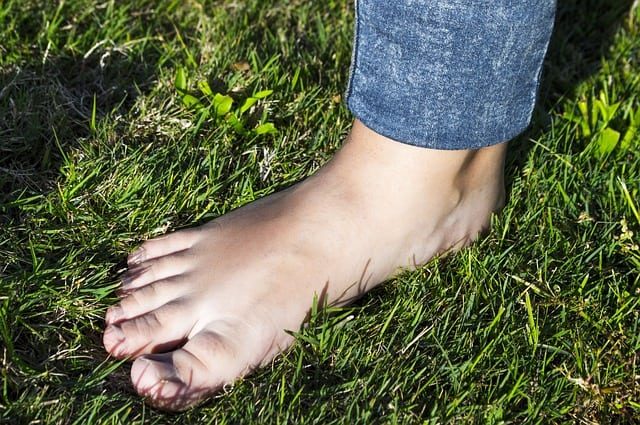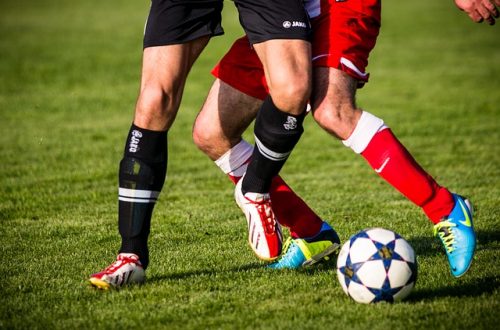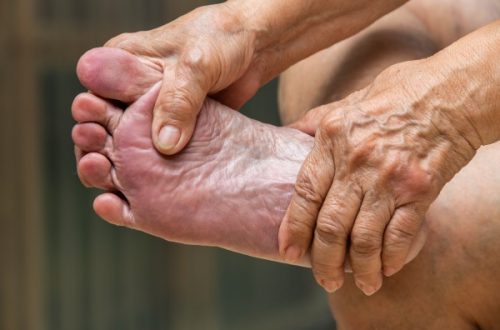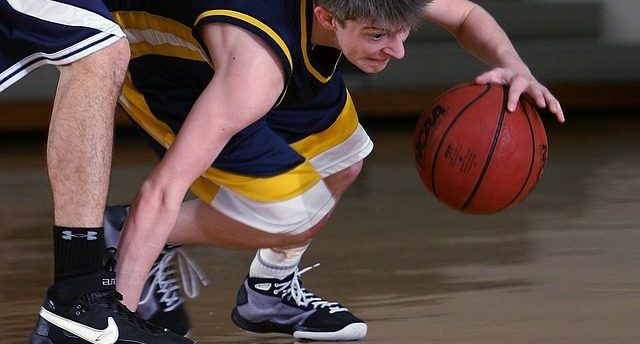When it comes to going barefoot with plantar fasciitis, there are differences of opinion on whether it is good for the condition and can help, or bad for the condition and will make things worse.
So is going barefoot with plantar fasciitis good or bad? Every case of Plantar Fasciitis differs with each individual, however, the general rule about going barefoot with plantar fasciitis is not to do it until your condition has improved to the point where you are pain free. At this stage, you can begin going barefoot to help strengthen the plantar fascia.
There are exceptions to this general rule, and we will look more in depth into those reasons in the article below.
The Catch 22 of Wearing Shoes
To understand fully why going barefoot with plantar fasciitis can be a problem, we need to look at how we arrived at this point.
When we were young children, we spent a lot of time playing outside and running around the house in barefeet, and our feet were strong because of this. The muscles and tissue within the foot strengthened to enable them to support our body weight as we played and ran around.
Going barefoot puts the most pressure onto the plantar fascia tissue, but if it is used to being under this strain, it is strong enough to handle the pressure without any problems.
As we got older and had to start wearing shoes to go to school and then to work, our feet began to weaken due to the support provided by the shoes. The muscles and tissues got weaker and weaker to the point that when we suddenly went barefoot or wore an unsupportive shoe such as a flip flop, our plantar fascia was put under too much strain and became damaged and inflammed.
Once we have developed Plantar Fasciitis, we now need the supportive shoes and possibly orthotic inserts to help with the healing process. Unfortunately, by relying on these supports, we are further weakening the foot and its ability to do its job and thus increasing the chances of further damage when we no longer use those supports.
This is why recovery from plantar fasciitis can be a long process as we first have to deal with the damage and inflammation, and then start strengthening the muscles and tissue within the foot to prevent a reoccurrence of the condition.
When NOT To Go Barefoot With Plantar Fasciitis
You should avoid going barefoot with Plantar Fasciitis if you fit any of the descriptions below.
- You have a job where you are seated for most of the day
- You have suffered with Plantar Fasciitis for more than six weeks
- You lead a non active lifestyle and rest for much of the day
- You are overweight or obese
- You are elderly
- You have circulation problems to your legs or feet
- You suffer with an inflammatory or rheumatoid arthritis condition such as fibromyalgia.
Basically, if you have lived a life where your Plantar Fascia has relied on being given support and is therefore weakened, you should avoid going barefoot until your Plantar Fasciitis has been cured and you are into the rehabilitation phase of the condition.

Who CAN Go Barefoot With Plantar Fasciitis
The following people should be ok to go barefoot, and are encouraged to introduce barefoot walking into their daily routine to help strengthen the plantar fascia tissue.
- Pain Free from Plantar Fasciitis
- Active in sports or Athletics and have strong feet muscles
- Are already used to walking barefoot
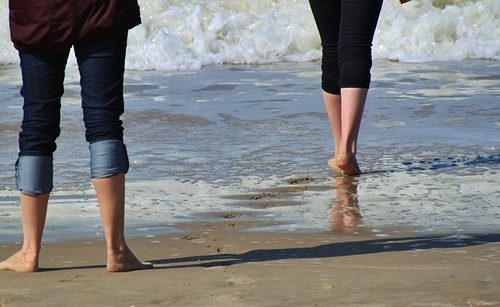
When & How To Start Barefoot Walking After Plantar Fasciitis
Once you have managed to rid yourself of the pain of Plantar Fasciitis through a program of rest, massage and gentle stretching, you can begin to introduce barefoot walking into your recovery routine.
If you are recovering from Acute Plantar Fasciitis then please ensure you have been symptom free for at least 2 weeks prior to introducing barefoot walking.
Acute Plantar Fasciitis is where you are in the beginning stages of the condition and have felt pain for less than 8 weeks.
If you have recovered from Chronic Plantar Fasciitis, please ensure that you have been symptom free for at least 4 weeks prior to engaging in barefoot walking to ensure that the damage within the plantar fascia has fully healed.
Chronic Plantar Fasciitis is where you have felt pain from the condition for a prolonged period of 2 months or more.
Slow & Steady
Once you have decided you are ready to introduce barefoot walking, you must make sure that you do so gradually.
Begin by doing the 5 minute stretching routine we have shown you here to ensure that the plantar fascia is fully stretched and able to handle the added stress placed upon it.
Try to find an area of softer ground such as grass, and walk just a few meters to start.
When not walking barefoot, you could wear some kind of supportive flip flop or sandal specifically made for dealing with foot problems such as plantar fasciitis. The Happy Feet company offer a wide range of shoes and insoles specifically for people with foot problems.
Each day slowly increase the distance that you are walking barefoot, but be sure to STOP if you feel any pain or discomfort.
If you do feel pain, wait for a few days before attempting to go barefoot again, and go back to the stage you were at prior to the onset of pain.
As your feet become stronger, you can increase the distance and also start introducing a harder surface such as wooden floor.
Once you have built up the muscles in the foot to a point where you feel confident that you are beyond the risk of damage, try to continue including barefoot walking into your daily routine to prevent the foot from weakening again.
Doing this will go a long way to preventing you from suffering from plantar fasciitis again in the future
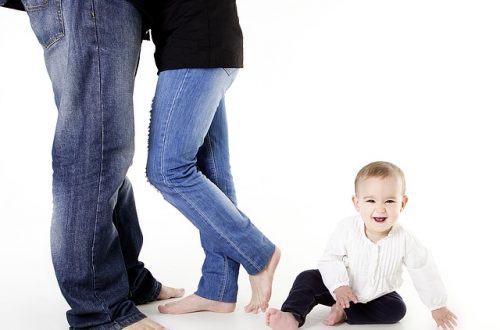
So You Definately Should Go Barefoot If You Are Able
As you can see from the points raised in this article. Walking barefoot is an essential part of your plantar fasciitis recovery but ONLY after you have taken the steps necessary to rid yourself of the pain and symptoms of the condition.
If you try to go barefoot too soon or push beyond your limits, then you run the risk of taking yourself back to square one with your recovery.
As with any medical condition, rehabilitation is a long and slow process and anyone trying to take shortcuts or force their recovery will only end up taking longer to get over the problem.
Take your time when introducing the barefoot walking and ensure that you continue with your daily stretching and massage routines and you will find that your feet will become stronger and pain free for years to come.
Related Articles:
